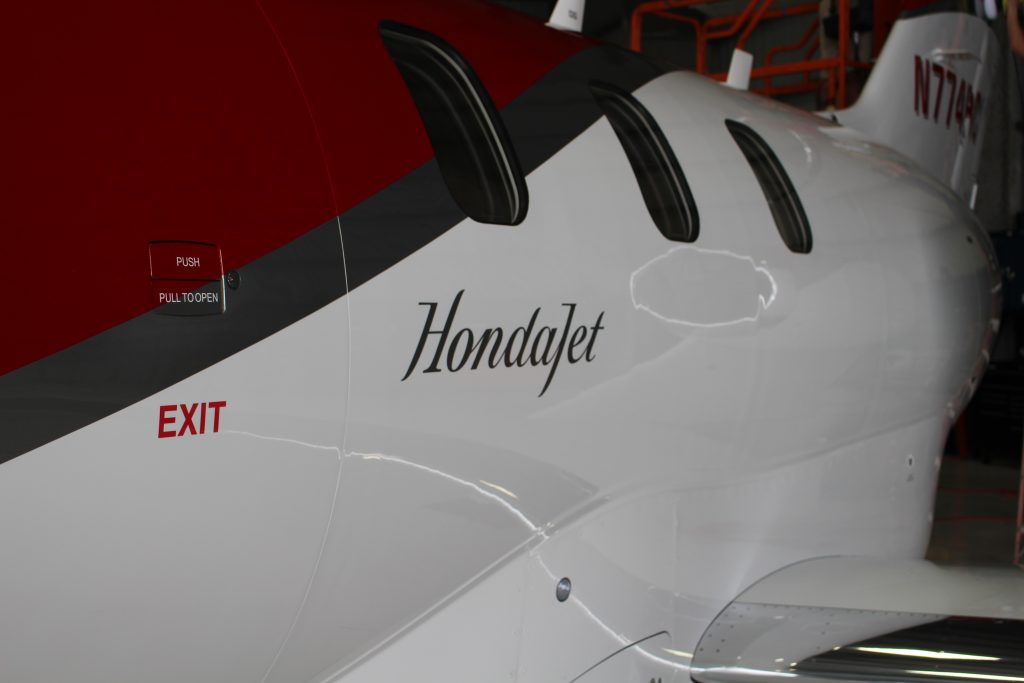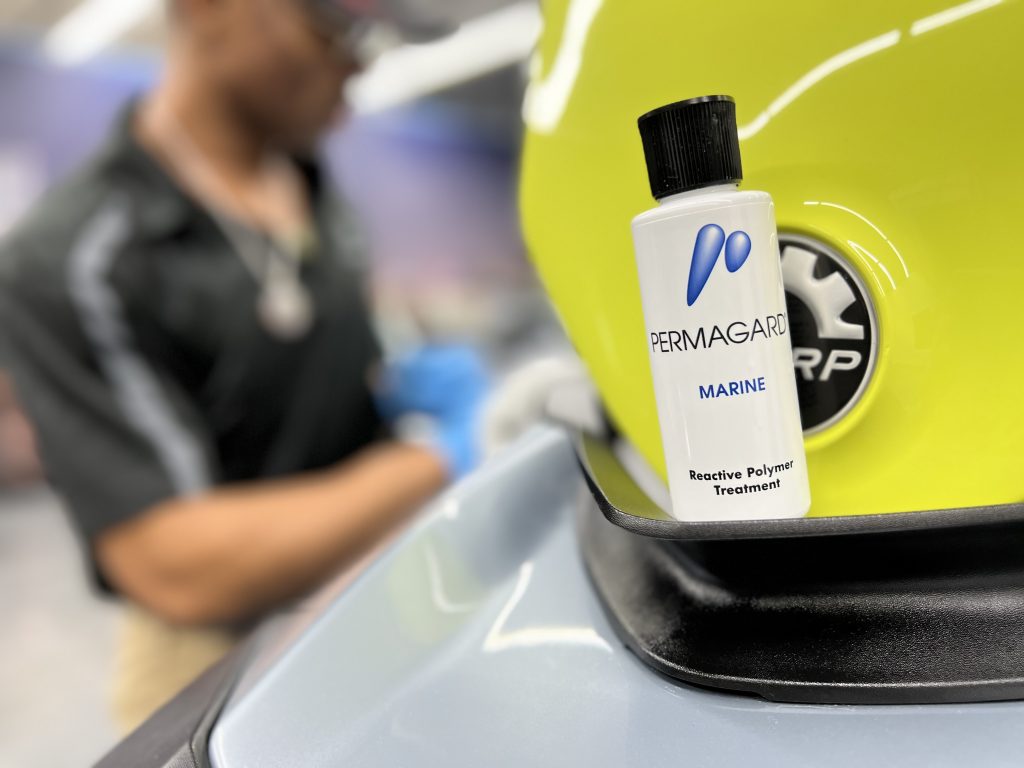Whether you fly, sail, or drive, you want to use the best products to preserve your investment. An advanced polymer coating does more than enhance your asset’s appearance. It forms a durable sacrificial layer that protects the external surfaces of your asset from damage that could lead to compromised structural integrity.
Permagard is an advanced polymer coating that is backed by industry approvals and offers state-of-the-art protection that surpasses traditional coatings in every way. This article explores common causes of paint damage in the aviation, marine, and automotive sectors, and explains how Permagard works to prevent it.

What Makes An Advanced Polymer Coating Unique?
Traditionally, protecting the paintwork on an asset is a time-consuming job that requires regular touch-ups and re-applications of various products to maintain the integrity of the original specifications.
Permagard is applied directly on top of painted surfaces. It bonds to the pores of the painted surface to create a chemical bond that provides durable and efficient protection. During the curing process, the molecules lengthen and interlock, forming the protective coating that enhances paint colors, while producing the high-gloss finish that Permagard is known for. Unlike other competitive products, Permagard’s cure time is very short, with no downtime after application is completed. The asset can be used during the curing period.

Advanced Polymer Coatings and The Aviation Sector
Aircraft cruise through the sky at an average of 500 MPH. At those speeds, wear and tear to an aircraft’s clear coat is a natural occurrence. Apart from this factor, other environmental attacks also affect an aircraft’s paint.
Common Causes of Aircraft Paint Damage
Aircraft are designed to withstand the extreme environment of high altitudes, but there are many factors present at this height that can do serious damage to an aircraft’s paint system. Some of these issues include:
- Chemical and acidic fumes from the aircraft’s engines and exhaust systems. Constant exposure to these fumes is damaging to the paint unless it’s protected by a high-quality protective coating, such as Permagard. Chemical build-up under the clear coat can cause filiform corrosion, visible as crawling bubbles under the painted surfaces.
- Humidity at high altitudes can lead to crevice corrosion or a uniform surface attack.
- Airborne pollutants such as ozone, carbon monoxide, particles, nitrogen dioxide, and sulfur dioxide are acidic, and can severely compromise the paint system on an aircraft.
- Physical deterioration, caused mainly by bird strikes, can severely scratch an aircraft’s paint and expose its naked metal to the elements.
- Salt-laden air impacts many aircraft that operate in coastal regions. It speeds up oxidation on painted surfaces, leading to a greater risk of corrosion forming.
How Permagard Protects Aircraft
Permagard creates an impermeable layer of protection that resists fumes, moisture, and airborne pollutants. The painted surfaces of an aircraft will remain protected under extreme conditions, effectively protecting the paint, and therefore helping to prevent corrosion from forming.

Advanced Polymer Coatings and The Marine Sector
The marine environment is tough on paint as seawater is significantly more corrosive than freshwater. The high levels of salt in seawater act as an electrolyte, which causes the metal to lose electrons more easily, thus lessening the time for corrosion to occur.
Sea air contributes to the corrosive environment as it is hygroscopic and attracts moisture. Salt draws water from the air to the painted surfaces on a vessel. Excess moisture creates an ideal environment for oxidation to occur. Corrosion from the salty water and sea air sabotages the strength of the clear coat, eventually leading to gel coat damage, which can then lead to costly repaints.
Causes of Marine Paint Damage
Yachts and other marine vessels face the biggest threat to their structural integrity from corrosion. The environment they function in creates multiple opportunities for corrosion to take hold. To be effective, a paint coating has to protect against many types of humidity-related factors, and other issues, such as:
Pitting Corrosion
Pitting corrosion is localized and forms small holes or cavities in the paint. These holes create an entry point for water and speed up the deterioration of the metal. While the pits may appear small, they can be large beneath the painted surface. They are dangerous as the extent of the damage may not be evident. There are two types of pitting corrosion:
- Trough Pits: These are deeper pits that can be narrow and deep, shallow and wide, or elliptical.
- Sideway Pits: Pits that include subsurface, undercutting, or horizontal grain attack.
Crevice Corrosion
Crevice corrosion occurs at joints, such as bolted connections. Sand and dust collect on the surfaces and create an environment that traps water at the site. The accumulated water stagnates and causes damage to the metal.
Biological Damage
Algae often accumulates on a boat’s hull and other underwater components. Algae attracts other organisms, such as mussels and barnacles, who attach themselves to the algae or the surface of the boat.
How Permagard Protects Yachts
Permagard is moisture-resistant and water-resistant, protecting the painted surfaces and preventing corrosion. It also provides a smooth slickness to the touch, thus increasing the ease of maintenance to wash the vessel.

Advanced Polymer Coatings and The Automotive Sector
Keeping a car’s paint job in good condition not only prolongs the longevity of the vehicle, but improves its resale value too. Car owners know how difficult it is to prevent damage to the paintwork on a car. Many spend numerous hours buffing and polishing or countless dollars on car care products or car cleaning services to combat all the signs of wear and tear.
Causes of Car Paint Damage
Whether you drive hundreds of miles every month or just take it out for a Sunday drive every week, you’re likely to expose your car to some of these environmental factors:
- Bird droppings may seem harmless, but even a small deposit can cause permanent paint damage, due to its high acidity. Bird droppings dry and harden in the sun and can be difficult to remove without a harsh solvent, often leading to micro-scratches in the process.
- Bug splatter is unavoidable, especially when taking long trips. Insect bodies contain acidic substances that damage the paint and trim on your vehicle if you don’t clean them off quickly.
- Tree sap severely etches a car’s painted surfaces. As the deposits dry and harden, they attach to the paint due to the thickness, causing stress on the clear coat and leading to damage.
- Gasoline and exhaust fumes react chemically with paint systems as a stripping agent. Regular contact can remove your clear coat over time, leading to the deterioration of your original paint specifications.
- Dust can act as an abrasive by embedding into the clear coat of your paint. Dust, mixed with rain, becomes an acidic compound that etches into the surface of painted surfaces.
- Acid rain is caused by atmospheric pollution that contains gases, such as nitrogen oxides and sulfur. The water evaporates, leaving behind an acidic layer that etches and damages the clear coat.
- UV damage affects vehicles regularly parked in sunlight, as the exposure to the sun severely oxidizes the paint’s clear coat, causing it to deteriorate and peel. This causes paint to become dull and washed out, leading to faded colors and an aged appearance.
- Car washes can cause swirl marks and love marks on a car’s painted surfaces. It also causes micro-scratches, with increased risk for marring.
- Car accidents can cause paint chips and scratches that leave the structure of the vehicle vulnerable to corrosion and deterioration.
- Salt on roads in the winter can etch onto a car’s painted surfaces and damage the integrity of the clear coat.
Permagard Repels Automotive Paint Threats
Permagard creates a durable sacrificial layer between your clear coat and environmental elements to protect your car’s original paint specifications. Our advanced polymer coating is effective at protecting your car or supercar from UV damage, bug splatter, bird droppings, tree sap, dust, water, and acid rain, to keep your vehicle slick and clean while providing the best non-invasive form of paint protection.

Advanced Polymer Coating – Protection That Is Both Good-Looking And Strong
When it comes to advanced polymer coatings, Permagard offers superior protection, while revitalizing any painted surface to look better than brand new. If you’re looking for an advanced polymer coating that can withstand the harshness of the toughest environments, Permagard is the best paint protection solution for you. Give us a call today, and we’ll connect you with one of our certified applicators so that you can experience the Permagard difference! It’s time to shine and see yourself in your brand!

